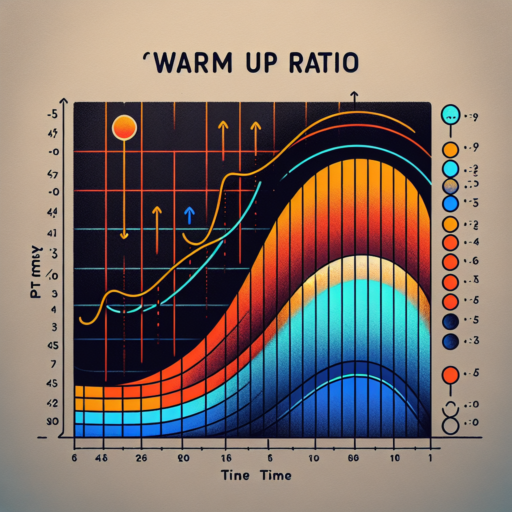What heart rate zones should I run in?
Understanding the ideal heart rate zones for running is crucial for maximizing your workout efficiency and preventing injury. Each heart rate zone corresponds to a specific level of exercise intensity, defined by a percentage of your maximum heart rate (MHR). By targeting the right zone, you can align your running sessions with your fitness goals, whether that’s burning fat, improving endurance, or increasing speed.
Different Heart Rate Zones Explained
Zone 1 (50-60% of MHR): This is the very light zone, ideal for beginners or for warm-up and cool-down sessions. Running in this zone helps improve your heart’s efficiency while promoting fat burning.
Zone 2 (60-70% of MHR): Also known as the fat-burning zone, running in this range is comfortable and can be sustained for long periods. It’s great for building endurance and teaching your body to use fat as fuel more efficiently.
Zone 3 (70-80% of MHR): This is the aerobic zone, where you can push the pace but still manage a conversation. Training in this zone improves your cardiovascular system and increases your aerobic capacity.
Zone 4 (80-90% of MHR): Also dubbed the anaerobic threshold, this zone is where you start to feel the burn. It’s highly effective for improving running speed and muscle strength but should be approached with caution to prevent overtraining.
Finding your ideal heart rate zone involves calculating your MHR and monitoring your heart rate during runs. This ensures that you’re not just running at the right intensity for your goals but also tracking your progress and adjusting your training as needed. Incorporating a mixture of zones into your training plan can maximize benefits and keep your routine interesting and challenging.
No se han encontrado productos.
Is it better to run in zone 2 or 3?
Understanding Zone 2 and Zone 3 Training
Running in Zone 2 and Zone 3 corresponds to different levels of heart rate intensity, with each zone targeting specific fitness goals. Zone 2, often referred to as the fat-burning zone, promotes endurance and efficient energy use by focusing on a lower intensity level. In contrast, Zone 3 pushes you into a moderately high intensity, enhancing your cardiovascular capacity and increasing your lactate threshold. Deciding whether it’s better to run in Zone 2 or Zone 3 depends on your individual fitness objectives and current level of training.
Benefits of Running in Zone 2
- Improves cardiovascular efficiency and endurance
- Enhances fat metabolism, aiding in weight management
- Allows for longer duration workouts due to lower intensity
Advantages of Exercising in Zone 3
- Increase in lactate threshold, improving performance in high-intensity activities
- Boosts overall cardiovascular and muscular strength
- Shorter workouts with a higher intensity level
What is the best heart rate range for running?
Determining the best heart rate range for running depends largely on your fitness goals, age, and current level of fitness. Generally, athletes aim to run within a target heart rate zone that is optimal for cardiovascular development and calorie burning, without overexerting themselves.
Understanding Your Maximum Heart Rate
The first step to identifying your ideal heart rate range is to calculate your maximum heart rate (MHR). A popular method to estimate this is the formula: 220 minus your age. This estimation provides a baseline from which to determine your specific heart rate zones, including the zone ideal for running.
Target Heart Rate Zones for Running
Once you have your MHR, you can calculate your target heart rate zones. For running, the most effective zone is often between 70% and 85% of your MHR. Operating within this range is believed to improve aerobic capacity and endurance, which are crucial for both short sprints and long-distance runs.
Running within this heart rate range encourages your body to burn fats and carbohydrates efficiently, making it an excellent strategy for weight management or loss. However, it’s important to listen to your body and adjust accordingly, as individual capacity and health conditions play a significant role in determining your ideal heart rate zone for running.
Is running in zone 5 bad?
When discussing the impact of running in Zone 5, it is essential to first understand what this means in the context of cardiovascular exercise. Zone 5 refers to high-intensity effort, typically between 90% to 100% of an individual’s maximum heart rate. This is the zone where you are pushing your body to its limits, and it is often used sparingly in training programs.
Understanding the Risks
Running in Zone 5 carries certain inherent risks. The primary concern is the increased potential for overuse injuries due to the high stress placed on the body’s joints, muscles, and cardiovascular system. Extended periods in this zone can lead to symptoms of overtraining, where your body does not have enough time to recover between intense sessions, potentially leading to decreased performance and increased fatigue.
The Right Approach to Zone 5 Training
While there are risks associated with running in Zone 5, incorporating it appropriately into a training plan can yield significant benefits in terms of speed and endurance improvements. The key lies in moderation and strategic planning, ensuring that high-intensity efforts are balanced with adequate recovery periods. This approach helps in minimizing the risks while maximizing the physiological adaptations that result from training at such high intensities.




